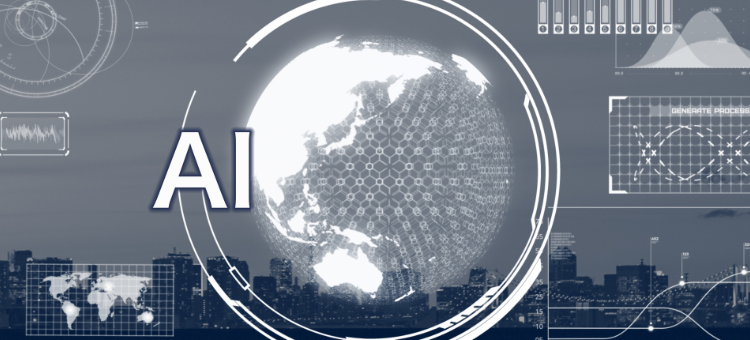The Role of Artificial Intelligence in Modern Weather Prediction

Weather prediction has always been a critical aspect of human life, influencing everything from daily activities to long-term planning in industries like agriculture, aviation, and emergency management. With the advent of advanced technologies, the accuracy and reliability of weather forecasts have significantly improved. Among these technologies, AI stands out as a transformative force, redefining how meteorologists predict and understand weather patterns.
Artificial Intelligence, with its capability to process vast amounts of data and identify complex patterns, is increasingly being integrated into meteorological practices. This article explores the role of AI in modern weather prediction, highlighting its evolution, applications, and the promising future it holds.
The Evolution of Weather Prediction Technology
Weather prediction has come a long way from ancient methods, where forecasts were based on observational patterns and folklore. The journey of meteorology took a significant leap with the invention of instruments like the barometer and thermometer, allowing for more scientific approaches to understanding the weather.
The advent of computers in the mid-20th century revolutionized weather forecasting. Numerical Weather Prediction (NWP) models, which use mathematical simulations of the atmosphere, became the standard. These models rely on complex equations that describe atmospheric dynamics and are solved using supercomputers.
Despite these advancements, traditional NWP models have limitations, particularly in handling the sheer volume and complexity of meteorological data. This is where Artificial Intelligence comes into play. AI, with its advanced algorithms and machine learning techniques, is capable of analyzing vast datasets more efficiently and accurately than ever before.
How Artificial Intelligence Enhances Weather Prediction
Artificial Intelligence and its subset, machine learning, have introduced new methodologies for improving weather prediction. Unlike traditional models that rely solely on physical equations, AI models can identify patterns and correlations in data that might be overlooked by human analysts.
One of the primary AI techniques used in weather forecasting is neural networks, which are designed to mimic the human brain’s ability to learn from data. Deep learning, a more advanced form of neural networks, can analyze multiple layers of data, making it particularly effective for complex tasks like weather prediction.
AI enhances weather prediction by processing vast amounts of meteorological data quickly and accurately. For example, AI models can analyze satellite imagery, sensor data, and historical weather patterns to provide more precise forecasts. These models are capable of making short-term predictions with remarkable accuracy, as well as improving long-term climate projections.
Applications of AI in Meteorology
The application of AI in meteorology is not just theoretical but has already shown significant practical benefits. AI-driven weather prediction systems are being used around the world to enhance the accuracy and timeliness of forecasts.
For instance, machine learning models have been employed to predict severe weather events such as hurricanes, tornadoes, and heavy rainfall. These models analyze historical data and real-time inputs to identify patterns that precede these extreme events, providing earlier and more accurate warnings.
AI is also transforming how we understand and predict climate change. By analyzing large datasets that include temperature records, greenhouse gas emissions, and other environmental variables, AI models help scientists develop more accurate climate models. This improved understanding assists policymakers in making informed decisions about climate mitigation and adaptation strategies.
Moreover, AI-powered weather prediction is crucial for industries like agriculture, where precise forecasts can optimize planting schedules, irrigation, and harvesting. In aviation, AI helps predict turbulence and improve flight safety (Source: Tomorrow.io). The integration of AI in these fields underscores its versatility and critical role in enhancing weather prediction across various sectors.
Weather APIs: Bridging data and prediction
Artificial Intelligence significantly relies on vast amounts of data to make accurate predictions, and this is where weather APIs come into play. A weather API, such as the one provided by tomorrow.io, serves as a crucial tool by offering access to real-time and historical weather data, which is essential for feeding AI models.
Weather APIs provide data points including temperature, humidity, wind speed, and precipitation, among others. By integrating this data with AI models, meteorologists and developers can enhance the accuracy of weather predictions. For instance, the tomorrow.io Weather API offers comprehensive data that can be seamlessly integrated into AI systems, enabling real-time updates and precise forecasting.
Moreover, weather APIs allow for the development of customized applications and services. These APIs facilitate the creation of innovative solutions such as weather-aware navigation systems, agricultural monitoring tools, and disaster management applications. By leveraging the power of AI and the extensive data provided by weather APIs, we can significantly improve our ability to predict and respond to weather conditions.
The synergy between AI and weather APIs exemplifies how technology can bridge the gap between raw data and actionable insights. This integration not only enhances forecast accuracy but also broadens the scope of weather applications, making weather data more accessible and useful across various sectors.
Benefits and Challenges of AI in Weather Prediction
The integration of Artificial Intelligence in weather prediction brings numerous benefits, enhancing the accuracy and reliability of forecasts. AI models, with their ability to process and analyze vast datasets, can identify subtle patterns and correlations that traditional methods might miss. This leads to more precise and timely weather predictions, which are crucial for sectors like agriculture, aviation, and disaster management.
AI-driven forecasts are not only more accurate but also faster. The ability of AI models to process data in real-time means that meteorologists can provide up-to-the-minute updates on weather conditions. This is particularly beneficial for predicting sudden weather changes and extreme events, allowing for better preparedness and response.
However, the implementation of AI in weather prediction is not without challenges. One significant challenge is the quality and completeness of data. AI models require vast amounts of high-quality data to function effectively. Incomplete or inaccurate data can lead to erroneous predictions, undermining the reliability of the forecasts.
Another challenge is the computational power required to run complex AI models. These models involve intricate calculations and data processing, which demand substantial computational resources. Ensuring that meteorological agencies and organizations have access to the necessary technology and infrastructure is critical for leveraging AI’s full potential.
Lastly, there is a continuous need for the refinement and validation of AI models. Weather patterns and climatic conditions are dynamic and ever-changing, requiring AI models to be regularly updated and trained on new data. This ongoing process ensures that the models remain accurate and relevant over time.
Conclusion
Artificial Intelligence has become a cornerstone in the field of meteorology, significantly enhancing the accuracy and efficiency of weather predictions. From processing vast amounts of data to identifying complex patterns, AI technologies have transformed traditional weather forecasting methods, making them more reliable and timely.
The integration of AI with weather APIs further bridges the gap between raw meteorological data and actionable insights, enabling real-time updates and more precise forecasts. This synergy is essential for various industries, including agriculture, aviation, and disaster management, where accurate weather predictions can lead to better planning and decision-making.
While the benefits of AI in weather prediction are substantial, challenges such as data quality, computational requirements, and the need for continuous model refinement must be addressed. Overcoming these challenges will ensure that AI-driven weather prediction systems remain robust and reliable.
Looking ahead, the future of weather prediction holds immense promise with the continued advancement of AI technologies. Innovations such as the integration with IoT devices, satellite data, and quantum computing are set to revolutionize the field further. These developments will not only improve the accuracy of weather forecasts but also enhance our ability to predict and respond to extreme weather events and long-term climate changes.
In conclusion, the role of AI in modern weather prediction is pivotal, marking a new era of precision and reliability in meteorology. As technology continues to evolve, AI will undoubtedly unlock new possibilities, making weather prediction more dynamic and beneficial for all sectors of society.
References
- A comprehensive list of academic references and sources cited throughout the article, ensuring credibility and allowing readers to explore the topic further.
- By clicking here, I state that I have read and understood the terms and conditions mentioned above.









